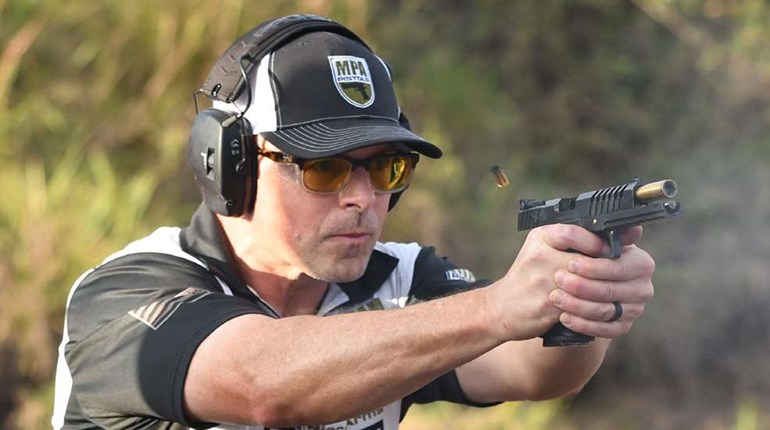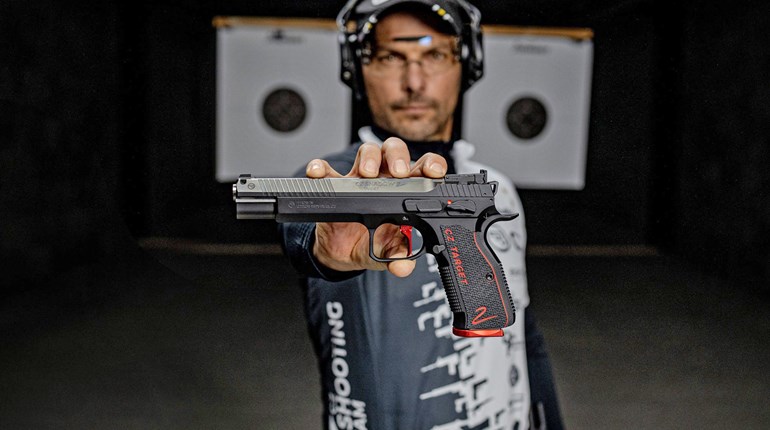
In the ever-evolving world of firearm training, "performance shooting" has emerged as a cornerstone concept, representing a blend of precision, speed and consistency. This discipline is not just about hitting a target, but doing so under varying and complex conditions, at different speeds and with high accuracy. Performance shooting is critical to skill development for several reasons, ranging from improving technical abilities to enhancing mental acuity and situational awareness.
In the late 1900’s US Department of Defense (SOCOM/ NAVSOC) commanders asked, “Why are civilians outshooting our special forces operatives?” The answer was shooting performance—how well you can do something that is exceptionally difficult repeatedly on demand. So, it reached out to top-tier performance-shooting instructors and hired them to teach the primary firearms instructors (PFIs), making performance shooting a requirement for all asymmetrical warfighters to this very day.
Performance shooting can be defined as the practice of using firearms in a manner that maximizes both accuracy and speed. It goes beyond the traditional marksmanship, which focuses primarily on hitting a static target at a fixed distance. Instead, performance shooting encompasses a dynamic approach where shooters must engage multiple targets, often while moving and under time constraints.
Human performance is the ability to accomplish a task on demand repeatedly greater than 80 percent of the time. Whether you may be training for combat or competition, performance shooting is 100 percent about making you a better shooter by developing your human performance.
If performance shooting could be encapsulated in a single concept it would be “Speed is a byproduct of efficiency, and accuracy is a byproduct of control.”
Speed and accuracy are nothing more than measurements of your performance and performance is adhering to a clearly defined shooting process versus chasing after its measurements.
The key elements of performance shooting include finding your efficiencies and developing control, balancing the need for quick shots with the necessity of hitting the target accurately, shooting dynamically, which simulates real-life scenarios more effectively than static shooting, target transition (quickly and efficiently moving from one target to another target), recoil management (controlling the firearm to sustain optimal recovery during rapid fire), judgement (making split-second decisions about shot technicalities) and target prioritization.
Exercise Your Mind And Body
Performance-shooting exercises, drills and examinations require shooters to develop a high level of proficiency with their firearms. This includes mastering the fundamentals of durable grip, stability, alignment and fire control. As shooters push their limits to perform better under duress, their technical skills improve, leading to greater overall firearms competency. The benefits of performance shooting include:
- Skillsets—Developing shooting skills well beyond current comfort zones and pushing the skills envelope to the very edge. Performance focus affords the student an opportunity to develop those “depth of shooting” skills necessary to perform over a broad spectrum of exercise, drills and examinations.
- Methodology—Pushing to failure and then developing skills for improvement beyond the failure point is a proven skills building methodology. Performance pushes the student to failure outside the boundaries of current abilities and enables growth through focused skills development creating success.
- Precision—Data collection and analysis are an integral part of performance training. Leveraging statistics to identify any gaps and inefficiencies helps the student observe progress and plot a trajectory toward exceptional shooting.
- Diagnostics—Performance shooting is designed to produce the ability to self-diagnose performance gaps so ongoing skills development can occur in venues and activities beyond training.
- Sustainment—Performance shooting is an extremely perishable skill, so it provides sustainment capabilities affording long-term skills sustainment alongside additional performance development.
The mental demands of performance shooting are significant. Shooters must maintain an elite level of mental focus and composure under pressure, which helps develop mental toughness. The ability to stay calm and make quick, accurate decisions translates to better performance in both combative and competitive applications.
Unlike traditional square-range training, performance shooting often involves dynamic movement, requiring shooters to be physically fit. Practicing performance shooting helps improve agility, coordination and overall physical conditioning, making shooters more resilient and capable.
Performance shooting scenarios emulate realistic situations where threats can come from multiple directions. This trains shooters to be more visually focused and aware of their surroundings, assess threats quickly and respond effectively. Enhanced situational awareness is a critical skill for personal defense.
Real World Performance
Traditional target shooting can sometimes fail to prepare individuals for the complexities of real-world situations. Performance shooting, with its emphasis on dynamic movement, multiple targets and time constraints, offers a realistic and measured training environment so that you know exactly what you are capable of versus believing you will ‘rise to the occasion’ under pressure. This realism helps shooters develop skills that are directly applicable to both professional and defensive scenarios.
The diagnostics nature of performance shooting fosters a mindset of continuous improvement. Shooters analyze their performance identify areas for improvement and set goals for future practice. This ongoing process of self-assessment to include data collection, analysis and goal setting, leads to sustained skill development over time.
Performance shooting is a dynamic and demanding discipline that pushes shooters to excel in multiple areas simultaneously. Its emphasis on efficiency (speed), control (accuracy) and split-second decision-making designates it an invaluable tool for superlative skill development.
Integrating performance shooting into regular training routines, shooters can achieve a higher level of competence and readiness, essential for both sporting success and real-world application. Whether for competitive sports, personal defense, or professional training, the principles and practices of performance shooting offer a path to becoming a more proficient, confident and capable shooter.




































